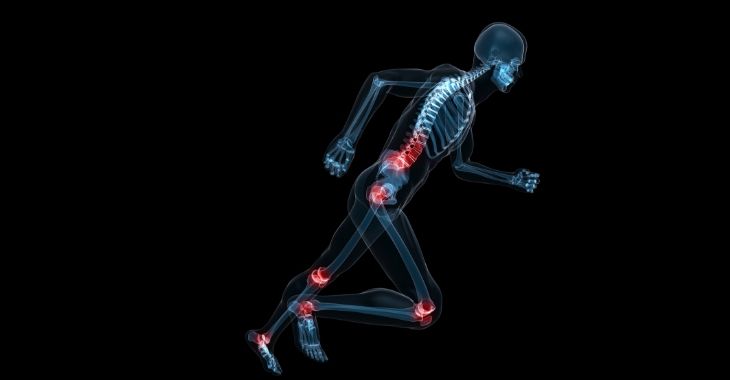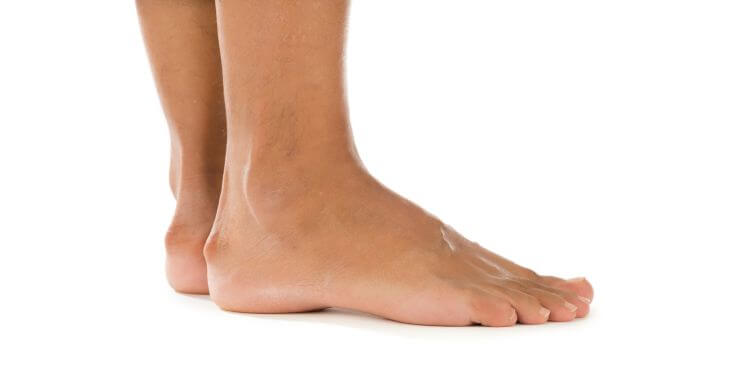Is Walking Good for Sciatica? Ideas for Sciatica Relief

Sciatica is a not a medical condition but a combination of symptoms that are related to the sciatic nerves in the lower back. If you have these symptoms, you may wonder, is walking good for sciatica? Here are ideas on long-term and immediate relief for sciatic pain.
What Is Sciatica?
Sciatica is a common spine and nerve problem that can cause pain, weakness and numbness in the low back, hips and legs. There are two sciatic nerves that exit the lumbar (lower) spine and travel down through the buttocks and to the right and left legs. Irritation of these nerves can result in sciatica.
The sciatic nerves are the largest nerves that exit the spine. When they are compressed by spinal discs, vertebrae, muscle spasms or other medical issues, the sciatica symptoms may be felt in the back, buttocks, hips, legs and even the feet.
Sciatica Symptoms
If you have a herniated disc, spondylosis, spinal stenosis or other conditions causing irritation of the sciatic nerve, you will likely have symptoms. These can travel along the sciatic nerve, usually only on one side of the body. Sciatica symptoms include:
- Low back pain
- Radiating pain into the buttock, hip and leg
- Tinging or numbness in one leg
- Weakness in a hip or leg
- Pain may be worse when sitting for long periods of time
Sciatica symptoms tend to be worse when you stay in the same position. Symptoms can worsen at night when you are trying to sleep due to the pressure on the nerve, or when standing or sitting in one place. Is walking good for sciatica symptom relief? It may provide immediate relief for sciatica pain.
Walking for Sciatica Pain Relief
Not moving can make sciatica pain worsen. Movement, including walking, can provide relief from sciatica symptoms by relieving pressure on the sciatic nerve. However, you do want to follow a few preventive measures to avoid aggravating the nerve by too much activity. Some tips include:
- Always stretch before you walk. Stretching the hamstrings, hip flexors and lower back can help prepare you for a pain-free walk.
- Take small strides. For sciatica pain relief through walking, you want to slow down and take shorter steps. This allows you to focus on proper posture and foot placement to avoid pressure on your lumbar spine.
- Walking posture. Stand up straight and land each step in the mid-foot – do not point your toes. This can provide protection for the lumbar spine and avoid irritation to the nerves.
- Tighten your abdominal muscles. Pulling in your stomach muscles and breathing regularly helps protect your back.
If you have sciatica pain, a slow, deliberate walk may provide relief. Keep in mind that this is to relieve pain, not a race. You should be able to talk while walking comfortably and not be out of breath. Regular walks between episodes of sitting or standing can provide immediate relief for sciatic pain.
Sciatic Nerve Pain Relief at Night
While walking can provide relief for sciatica during the day, what about sciatic nerve pain at night? To get a good night’s sleep, you need to calm the sciatic nerve to relieve symptoms. Some tips for sciatic nerve pain relief at night include:
- Take a warm bath before bed. The heat can help relax the muscles surrounding the sciatic nerves. You can also use a heat pack on the lower back for a similar effect or take a hot shower.
- Change your sleep position. Lying on your side with a pillow between your knees can help protect the lower spine while you sleep. Sleeping on your back with knees raised and supported by pillows may also help relieve sciatic nerve pain.
- Upgrade your mattress. A good, medium-firm mattress can be a worthwhile investment if you have a spine condition that is causing sciatica. Adjustable mattresses can also allow you to create the ideal position to relieve stress on your lower spine and sciatic nerve.
With the right sleep position and support, you may be able to relieve sciatica symptoms to get the sleep you need. If you still have sciatic pain even with making changes in your sleep patterns, you may need other treatments.
How Long Does Sciatica Last?
As earlier discussed, sciatica is not a condition, but symptoms caused by issues that irritate the sciatic nerve. Treatment of the underlying condition can stop sciatic nerve pain, but that is not always possible with spine conditions. Some treatments that may help relieve sciatic pain include:
- Physical therapy
- Medications
- Anti-inflammatory steroid injections
- Stretching
- Acupuncture/chiropractic care
- Spine surgery

If you have sciatic pain, it is important to determine the cause of your sciatica symptoms. Your doctor or spine specialist can provide diagnosis and treatment options for pain relief. Keeping moving during the day and using proper sleep methods at night can provide immediate relief for sciatic pain.
The information provided on this website, including text, graphics, images, and other materials, is intended solely for informational purposes and should not be used as a substitute for professional medical advice, diagnosis, or treatment.




)